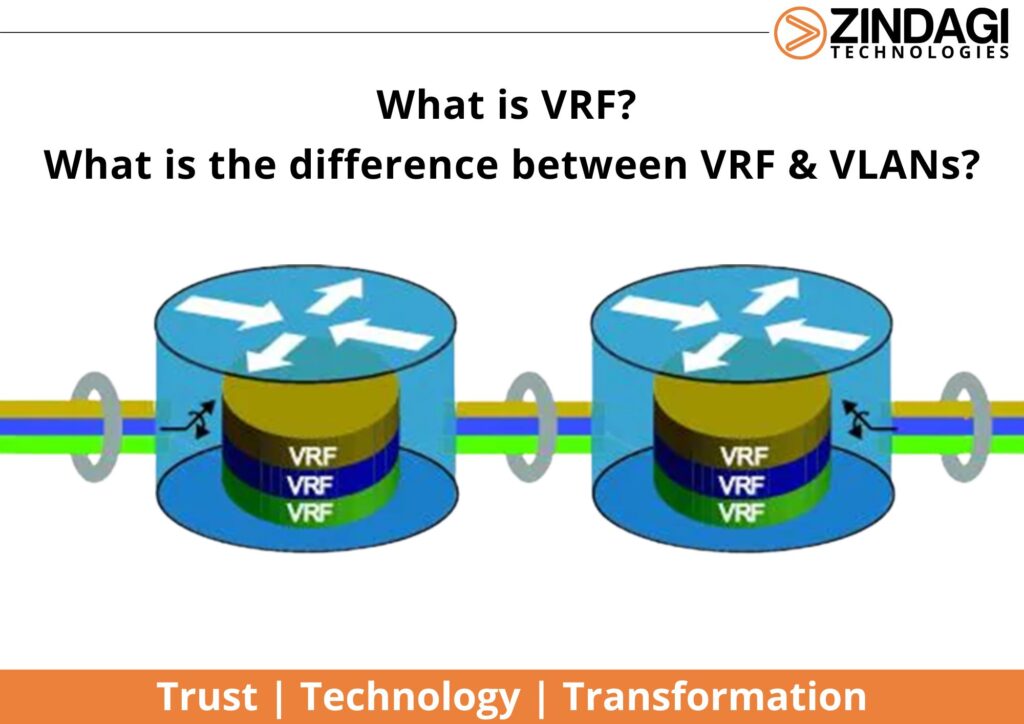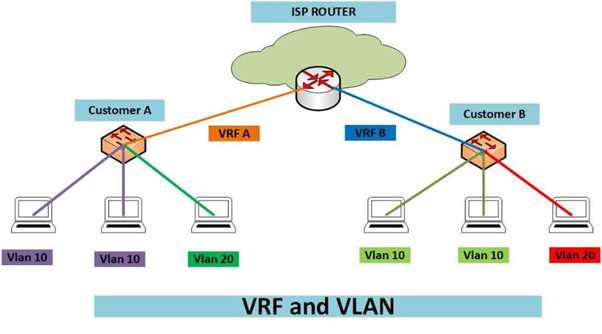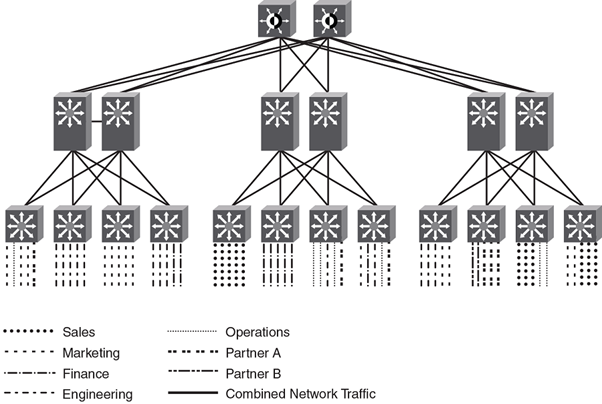What Is VRF? What Is The Difference Between VRF And VLANs?

A Layer-3 virtualization technology called Virtual Routing and Forwarding (VRF) is used to virtualize routing tables so that numerous routing tables can coexist and function simultaneously in a single hardware router. Layer-3 direct routing is possible between any two devices in the same VRF; however, it is not possible to reach a device in another VRF directly.
Similar to how every VLAN on every switch has its own Layer-2 forwarding and flooding domain, so too does this. Any device in a VLAN can directly communicate with another device at Layer 2 in the same VLAN, but it cannot communicate with a device in another VLAN unless a Layer 3 router forwards it. At layer three, VRFs use roughly the same theory as VLANs and trunking.
Similar to how each access (switched) port is assigned to a distinct VLAN in a VLAN configuration on a switch, a VRF is assigned to a Layer-3 (routed) interface on a router. We must additionally establish routes with their unique next-hops to VRFs since VRF is a Layer-3 virtualization approach.
Where Is Virtual Routing and Forwarding Used?
Multiple routing instances can be configured on a router or Layer 3 switch using virtual routing and forwarding. The goal is to maintain customer traffic and routing on different hardware.
When VRF cannot be used, customer traffic is divided using access control list-based filtering and routed using physical interfaces or sub-interfaces. Due to this, VRF has become more popular among service providers, data centers, and corporate local area networks (LANs) that use multiprotocol label switching (MPLS) and multiprotocol border gateway protocol (MP-BGP).
Difference Between VRF And VLANs

Essentially, VRF virtualizes the same way that virtual LANs (VLANs) do. They are the same as the Transmission Control Protocol/IP layer of a VLAN at Layer 3. Both routing instances can utilize the same IP address without conflict because they run separately.
Additionally, since network paths can be divided in this manner without the use of several routers, network functionality is improved. A single router can appear to be several routers with VRF, whereas a single switch can appear to be a multi-switch with VLAN.
What Is Multi-VRF?

Service providers can support multiple VPNs with the help of the multi-VRF feature, even if their IP addresses overlap. It will assign Layer 3 interfaces to each VRF in order to define routes for various VPNs and establish virtual packet-forwarding tables.
A service provider can support several routing domains on a single customer edge router using the Multi-VRF functionality, with each routing domain having its own interface, routing table, and forwarding table.
What Is The RD Value In The VRF?
Organizations can divide IP address space among separate routing domains by using VRF names. In order to prevent overlapping subnets from interfering with one another, each client has its own IP VRF. Each default route is made distinct from the others using a route distinguisher, or RD value for short.
Zindagi Technology is a leading IT consulting company in Delhi that provides IT services to upgrade your IT infrastructure. We have successfully completed lots of IT projects covering the public, govt and private sectors. We provide IT solutions like cyber security, cloud computing, VAPT, VoIP, etc. We can assist you with your network programs. We are always on top of the game be it IT consulting, cloud migration, cybersecurity services and other IT services as well. You can ping us at +91-9773973971 and also drop us an email. We’ll make sure to get back to you with our services. Follow us on LinkedIn and be in touch with the latest technology blogs and news.
Author
Lokesh Kumar
Associate Consultant
